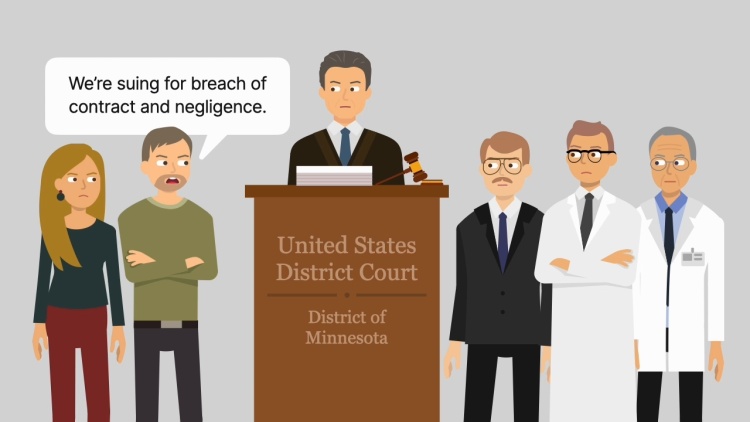Kaplan v. Mayo Clinic
United States District Court for the District of Minnesota
947 F. Supp. 2d 1001 (2013)

- Written by Sean Carroll, JD
Facts
Elliot Kaplan (plaintiff) underwent surgery at the Mayo Clinic (Mayo) (defendant) to treat pancreatic cancer. After the surgery, Mayo determined that Kaplan never had the cancer. Kaplan and his wife, Jeanne Kaplan (plaintiff), filed suit against Mayo and Dr. David Nagorney (defendant) for breach of contract and negligent failure to diagnose. Nagorney had told Kaplan that he would perform a biopsy before surgery but did not perform the biopsy. The district court granted Nagorney summary judgment and granted judgment as a matter of law in favor of Mayo on the breach-of-contract claim. Thereafter, a jury returned a verdict in favor of Mayo on the negligence claim. The United States Court of Appeals for the Eighth Circuit affirmed as to the negligence claim but reversed as to the breach-of-contract claim. The court of appeals found that a reasonable jury could find that Nagorney established a contract with Kaplan when he stated that he would perform a biopsy and breached that contract when he did not perform the biopsy. The court of appeals remanded the case for further proceedings. On remand, Mayo filed a motion in limine asking the district court to prohibit the Kaplans from submitting evidence of emotional pain and suffering in the context of the breach-of-contract claim.
Rule of Law
Issue
Holding and Reasoning (Tunheim, J.)
What to do next…
Here's why 899,000 law students have relied on our case briefs:
- Written by law professors and practitioners, not other law students. 47,000 briefs, keyed to 994 casebooks. Top-notch customer support.
- The right amount of information, includes the facts, issues, rule of law, holding and reasoning, and any concurrences and dissents.
- Access in your classes, works on your mobile and tablet. Massive library of related video lessons and high quality multiple-choice questions.
- Easy to use, uniform format for every case brief. Written in plain English, not in legalese. Our briefs summarize and simplify; they don’t just repeat the court’s language.






